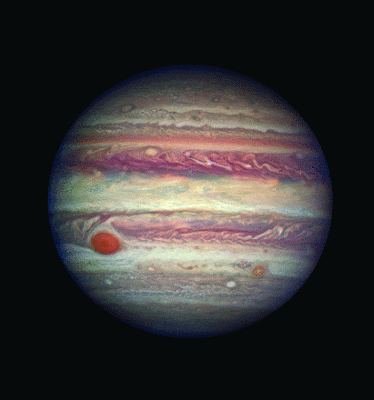The image shows a close-up of the planet Jupiter taken by the Hubble Space Telescope last April. For years, the formation of the solar system has been studied, and for this, we have resorted to computerized predictive models that shown how Jupiter must have been formed very early in the life of the solar system. However, the age of the planet had never been directly dated.
Jupiter is composed of a solid core surrounded by a vast gaseous atmosphere from the gaseous nebula that gave rise to the solar system. The nucleus was the first part for Jupiter to form, which subsequently trapped the nebula's gas with its gravitational force during the solar system's formation, known as the accretion disk. This disk of solid and gaseous materials is what would shape the planets.
It is known that during this period, and within this disk, there were two meteorite reservoirs with different characteristics and that they remained spatially separated during the formation of the solar system.
Thomas S. Kruijer and his team from the Institute of Paleontology at the University of Munster in Germany analyzed iron meteorites. First, they measured the amounts of tungsten and molybdenum isotopes presented in the meteorites. With that, they were able to determine that the core of the planet Jupiter grew to approximately 20 times the Earth's mass within the first million years of the solar system's life.
Later, in the next 3 to 4 million years of the solar system's life, the mass of Jupiter reached 50 times the Earth's mass. These measurements agree with the predictive models. Thus, suggesting that Jupiter was the first planet to form. Furthermore, Jupiter acted as an effective barrier against the transport of matter into the accretion disk, explaining why there are no Super-Earths in the system. The Super-Earths are rocky planets similar to planet Earth but with several times the Earth's mass. Something that has been observed in most of the exo-planetary systems currently found.
References
- Kruijer, T. S., Burkhardt, C., Budde, G., & Kleine, T. (2017). Age of Jupiter inferred from the distinct genetics and formation times of meteorites. Proceedings of the National Academy of Sciences, 201704461.
